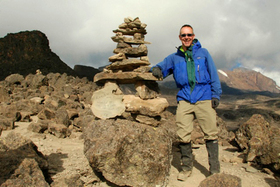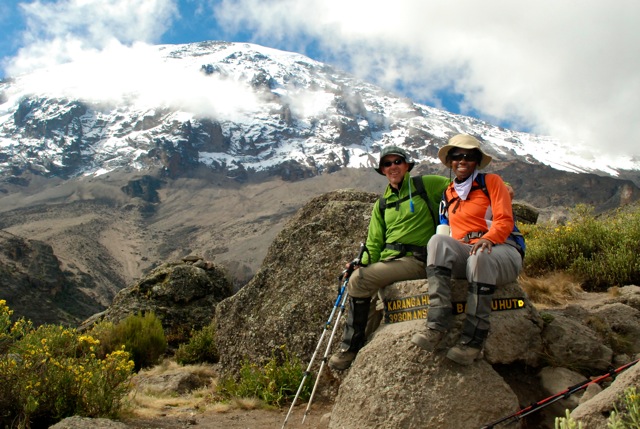 Dr. Brett Hessel summiting Mount Kilimanjaro
Dr. Brett Hessel summiting Mount Kilimanjaro We are going to start sharing some more about our fantastic team members so you can get to know us better.
Today's Team Member: Brett Warren Hessel
Nickname: "Ski", a shortened version of another nickname made up by my brother: "Brettski"
Favorite thing about being a part of this team:
Having access to the knowledge and skill of different practitioners, and the opportunity to refer our patients to these professionals.
Practice at Grimshaw Chiropractic: Chiropractic adjustments, acupuncture.
What inspires you:
Spending time with my family and the satisfaction that comes from solving complex challenges.
Hobbies:
Reading, mountain biking, skiing and just about any other activity one can do in the mountains.
Favorite color: Blue
Favorite movie: The Blues Brothers - love the music, their cool sunglasses, the cameos of famous blues musicians and their belief that "they'll never get caught. They're on a mission from God".
Pet's name: Princess Buttercup
Learn more about Dr. Brett Hessel and our team
Today's Team Member: Brett Warren Hessel
Nickname: "Ski", a shortened version of another nickname made up by my brother: "Brettski"
Favorite thing about being a part of this team:
Having access to the knowledge and skill of different practitioners, and the opportunity to refer our patients to these professionals.
Practice at Grimshaw Chiropractic: Chiropractic adjustments, acupuncture.
What inspires you:
Spending time with my family and the satisfaction that comes from solving complex challenges.
Hobbies:
Reading, mountain biking, skiing and just about any other activity one can do in the mountains.
Favorite color: Blue
Favorite movie: The Blues Brothers - love the music, their cool sunglasses, the cameos of famous blues musicians and their belief that "they'll never get caught. They're on a mission from God".
Pet's name: Princess Buttercup
Learn more about Dr. Brett Hessel and our team



 RSS Feed
RSS Feed
